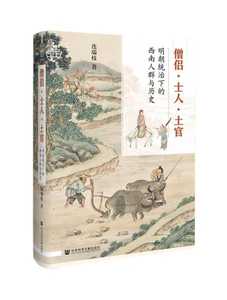Publications
僧侣士人土官
明朝统治下的西南人群与历史

A most interesting book about the transformation of the SW during the Ming.
Buddhist Temples and Ancestral Halls
The Reconstruction of Native Official Rituals in Western Yunnan
Abstract: In the process of abolishing the native officialdoms of southwest China, the Ming court justified its actions by citing violations of ethical and ritual principles. During the Zhengtong 正統 period, offices of native officials in Heqing 鶴慶 were abolished and replaced with an office for centrally appointed imperial officials. These imperial officials turned Buddhist temples into Confucian schools and attacked local beliefs regarding living Buddhas. At the same time, local Confucian scholars advocated orthodox ritual in the name of doing away with improper ritual practice. In response, nearby native officials began cautiously handling political issues, and sought to legitimize the foundations for their status by conducting rituals in the classical Confucian tradition. The author examines the history of Lijiang 麗江 and Menghua 蒙化 Prefectures in Yunnan 雲南 and discusses how their native officials used the statuses of ancient nobles as they sought to establish Confucian rituals and temples corresponding to their status within the Ming bureaucracy. Several strategies are identified, including (a) building Buddhist temples, ancestral halls, and official shrines; (b) transforming mythical figures into protective deities by creating mountain and river rituals that conformed to ritual orthodoxy; and (c) establishing official genealogies and using textual methods to incorporate clan myths and legendary lineages into orthodox historical narratives, thereby strengthening the superiority of border native official lineages. By analyzing a series of actions of native officials in this process, the author explores the cultural strategies adopted by native officials to safeguard their prestige and local interests.
大理山乡与土官政治
鸡足山佛教圣山的形成
Abstract: This paper discusses how Chicken Foot Mountain 雞足山 in Yunnanwas shaped into a Buddhist sacred site during the late Ming period, anddescribes the strategies utilized by native officials (tusi 土司) to strengthentheir ascribed status. The Ming state gradually extended its influence intosouthwest China’s mountain areas in order to bring material resources underits control, resulting in conflicts between mountain populations and lowlandfarmers that frequently required the intervention of native officials. During thesame era, a local mountain in the Dali 大理 area came to be popularlyidentified as Chicken Foot Mountain, renowned as the favored meditation siteof the Indian Buddhist Saint, Mahākāśyapa, and many Buddhist temples werebuilt in the area by native elites. Worship at Chicken Foot Mountain waseventually brought under the auspices of the Ming state. However, the realconcern behind these ritual institutions was to establish control over a hugequantity of mountain resources, land and trading routes. In this paper, I arguethat as commerce increasingly impacted southwest China, the formation oforthodoxy and its accompanying institutions in the mountain areas legitimatizednative officials’ traditional privileges.
女性祖先或女神
雲南洱海地區的始祖傳說與女神信仰
@article{連瑞枝2005女性祖先或女神, title={女性祖先或女神-雲南洱海地區的始祖傳說與女神信仰}, author={連瑞枝}, journal={歷史人類學學刊}, volume={3}, number={2}, pages={25--56}, year={2005}, publisher={香港科技大學華南研究中心} }
王權, 觀音與妙香古國
十至十五世紀雲南洱海地區的傳說與歷史
English Title: King Power, Avalokitesvara and the Ancient Country of Miaoxiang: Legends and History of the Erhai Region in Yunnan from the Tenth to fifteenth centuries, Lian Ruizhi's PhD diss.